Fall Lawn Prep Guide
As fall arrives with the fall of dead leaves and the promise of winter, there are a lot of changes in the needs of plants and trees. Fall brings with it a series of changes, all of which we learn to get used to as quickly as possible. But while we can adapt quickly, plants and trees take longer, especially the delicate plants and grass in one’s lawn which need special care.
Preparing your lawn for the fall can be a difficult, delicate task with a lot of things that you have to look after. There are a number of factors to consider and most of them must be addressed during fall so that the lawn is prepared for the winters. This article will cover all these factors in detail so that there is simply nothing left to see to and everything is taken care of before fall even arrives.
Getting into these factors, let’s start out with one of the basic ones in an easy-to-follow order. The level of difficulty of any of these tasks won’t be too high once one has the knowledge as these tasks are easy and suited for beginners. Most of the trouble in doing these simple tasks is just knowing what to do; the rest is natural to perform.
Leaf Cleanup
With fall nearing, one of the first things you’d notice is the leaves falling, which does look pretty in some situations but usually doesn’t look too clean. Therefore, you need to maintain the lawn into looking a lot cleaner and well-prepared before the much-awaited winters.
Leaf cleanup does branch out to a few more details that one should look after. The following explains the factors of leaf cleaning that should be addressed to get you set.
Our Leaf Removal Guide provides a blueprint for cleaning up your lawn.
Rake Daily
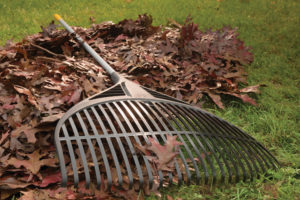 When fall arrives, the leaf fall discussed before proves to be a problem for the lawn itself if not attended to. It is necessary that a rake is used to clean leaves off the surface of the lawn since the falling leaves will start smothering the grass by covering it and making it devoid of sunlight, water, and the other necessary nutrients it needs to grow well, look green and stay soft. Raking regularly – if not every day – until winter arrives is a very important factor to pay attention to since leaving fallen leaves unattended would result in the leaves freezing over and breeding fungal diseases on your lawn.
When fall arrives, the leaf fall discussed before proves to be a problem for the lawn itself if not attended to. It is necessary that a rake is used to clean leaves off the surface of the lawn since the falling leaves will start smothering the grass by covering it and making it devoid of sunlight, water, and the other necessary nutrients it needs to grow well, look green and stay soft. Raking regularly – if not every day – until winter arrives is a very important factor to pay attention to since leaving fallen leaves unattended would result in the leaves freezing over and breeding fungal diseases on your lawn.
While raking, use a standard rake to gently pick up the leaves. Don’t thrust into the ground too hard or else it would break the rake or damage the grass.
Disposing of the Leaves
While raking the leaves, use a bag to dispose of the leaves efficiently in the old-school way. You may also use a shredder to help shred the leaves into smaller pieces that can be easily spread across the lawn as compost which, in turn, would help the lawn.
Lawnmower with a Collection Bag/Vacuum System
A very efficient alternative of raking the lawn is mowing it with a lawnmower with advanced mechanisms such as a collection bag or vacuum system which would dispose of the fallen leaves very easily, saving you the trouble of raking extensively.
Check out our review of the Monster Leaf Bag System for a great mower attachment
Brush Removal
Mowing the Lawn
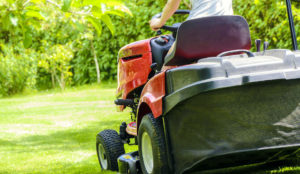 Using an efficient lawn mower that’s suited for easy use will ensure good results and freshly cut grass that grows finely. Since growth is slowed down during fall, there is not much need for frequent mowing. As mentioned before, using a lawnmower with a good disposal system would also prove to be a great alternative to raking and ease the long process into a very simple and efficient one.
Using an efficient lawn mower that’s suited for easy use will ensure good results and freshly cut grass that grows finely. Since growth is slowed down during fall, there is not much need for frequent mowing. As mentioned before, using a lawnmower with a good disposal system would also prove to be a great alternative to raking and ease the long process into a very simple and efficient one.
The last two mows of the year – that happen just before fall ends – are best done while keeping the mower at its lowest setting to maximize the nutrients that the grass absorbs over the course of the season.
Herbicides and Pesticides
Using herbicides to control what grows in the lawn is necessary since the lawn may contain roots of certain weeds could be harmful and start growing in the winters, so taking care of this situation is certainly necessary.
Using a pesticide in the fall, will ensure your lawn is ready to fight off diseases as it prepares for cold weather dormancy.
Learn more about pesticides in this post
Dethatching the Lawn
Thatching occurs when some portions of the grass aren’t properly chopped due to a mower that is less effective or when excessive clippings are left around the soil. This gives rise to similar problems as leaf fall does. The thatch – if thick enough – might damage the grass from getting nutrients and sunlight, so thatching a lawn after mowing is very much recommended.
Dethatching a lawn is pretty easy and can be done simply by raking the lawn and removing the excessive clippings. Again, thatching won’t be too necessary during fall since there is no need for frequent mowing as well. However, in the last few days, mowing the lawn on the lowest setting might produce a fair amount of thatch, so dethatching might be necessary then.
To learn more about dethatching your lawn, check out this post.
Cleaning Gutters
Although this is not technically a part of preparing one’s lawn for the fall season, it does relate heavily and is a notable mention due to the repercussions of overlooking this task.
Leaves start falling immensely with the arrival of the fall season and along with causing possible damage to the lawn, fallen leaves may also affect one’s gutters and internal plumbing a fair lot. But how?
After the leaves have fallen and are present around the gutters, they can be drained into them by rain, wind, or any other reason. When the fall season ends, the leaves have enough moisture around them that it makes them freeze in the gutters, clogging it in time. Once the snow melts, the frozen leaves melt along with it, which causes flooding and damage to one’s home. Hence, this is not a factor to be taken lightly.
Using Hands
Wear gloves, grab a disposable bag, and get to grabbing the leaves by simply scooping them up and dropping them in the bag. You can dispose of the bag later on. Use of any tool here instead of hands isn’t really common but can be done. Nonetheless, it’s recommended to use gloves.
Using a Hose to Wash Out the Leaves
This is usually done after most of the leaves are scooped out and disposed of since this helps clean away any remaining leaves that are left in the drains. It’s best to do this in the said order of steps since going with the opposite order would only prove to be messy and troublesome.
Trimming Trees
Now comes the fun part; pruning the trees is an activity that requires accuracy and direct care of your plants. Pruning is usually done not only to make trees and plants look better and delicate but to also encourage growth within the plant so that it gathers nutrients and grows while repairing itself.
Our Summer Pruning Guide offers more insight as to the benefits of pruning and trimming
![tree-pruning]() Pruning During the Fall
Pruning During the Fall
It’s not recommended to trim trees during the fall season since most plants have fungi over them, which results in decay. In addition to that, it’s notable that if you trim during fall, the warm days will make sap rise up to make the plant try to heal and grow, but once the cold night settles down, the plant growth freezes and the nutrient intake is slowed down. This damages the plant a fair lot, so it’s recommended not to use pruning tools during fall and instead, use them only during spring or early winter.
How Dampness Factors into Pruning
A few other cases one should look at while pruning is to abstain from it when the plants are wet since dampness encourages the spread of diseases and the cuts in the plant allow these diseases to enter the plant. Thus, dampness is another factor that may affect the results of pruning.
Prime Time for Pruning
Keeping all of these factors in mind, light pruning or cutting off only the dead branches would cause no harm and the best preparation one can do during the fall season is to cut off any dead branches that may result.
As mentioned earlier, early spring is one of the best seasons to start pruning. The plants can bloom and wounds can heal easily through the provision of nutrients and encouragement of growth.
Once the fall season ends, winter begins and this is simply the best time for pruning according to many experts. This is the time when the growth of trees is dormant and the leaves are all gone. There are enough reserves in the plants during the winter season and unlike the fall season, the constant cold limits the spread of diseases within the plant. This makes cutting off branches much more beneficial since once spring arrives, the growth will be at max and the plant will heal quickly without any diseases spreading along with it.
Short Overview on How to Prune
Now that the best time for pruning is discussed, knowing how to prune is just as important. One should focus first on the dead branches, then focusing on the diseased areas in the branches of the plants. It’s best to research more on how to trim trees more effectively, but this is a general overview that summarizes it.
Our Pruning and Cutting Guide can offer you more guidance
Watering the Lawn
Water is one of the main necessities for the growth of a plant as it ensures the transport of other nutrients along the plant. Watering the lawn is, therefore, a necessity that should never be overlooked. Many people do not water plants in the fall, thinking that since the leaves are falling, the evaporation rates are low, and the growth of many plants slows down, there wouldn’t be much of a necessity to water them. But this is really not the case since water is always necessary.
To learn more about watering your lawn, check out our Guide to Lawn Watering.
Mowing the Lawn
This part has been covered before under Brush Removal, but watering is more effective after mowing since the freshly cut grass will be provided with nutrients that start storing within the soil and help it survive the winters.
Thatching the Lawn
This part is again covered in the Brush Removal section of the article, but thatching is necessary before watering your lawn if the thatch is more than half an inch thick since watering it would be of no use to the grass and might even damage it further.
To learn more about thatching your lawn, check out this post.
![]() Aerating the Lawn
Aerating the Lawn
Digging holes in the lawn is known as aerating the lawn, which allows for a better flow of nutrients and encourages growth. Holes should be only an inch or two deep at different distances from each other, depending on the size of the lawn. It’s recommended to aerate the lawn in the fall to encourage the storage of nutrients and ensure growth in spring.
Planting In the Fall
Planting during the fall season ensures the best growth in the spring since the soil will gather and store nutrients in the winter, which would be used to make the plants grow in the spring. There are several plants that are recommended to plant during the fall.
Check out our Guide to Planting Grass for more tips here.
Fertilizing the Lawn
Fertilizing the lawn with products that have a high potassium content helps them survive in the winters, so it is recommended in the fall season. Fertilizing roses, however, is not recommended.
With all this said and done, watering the lawn should be managed once a day and shouldn’t be too much or too little.
Want to learn more about fertilizing your lawn, check out our Lawn Fertilizer Guide
![lawn-care-tools]() Cleaning your Lawn Care Tools
Cleaning your Lawn Care Tools
- Empty gas from the lawn mower’s tank
- Sharpen blades that help in cutting
- Disconnect hoses and pipes
- Clean rake and dispose waste bags
- Store all tools safely


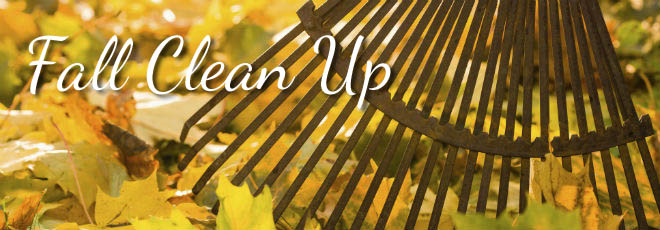
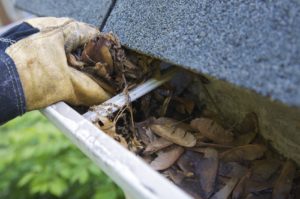
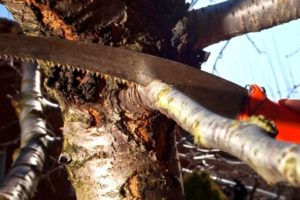
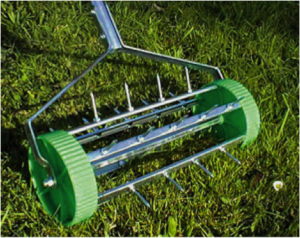 Aerating the Lawn
Aerating the Lawn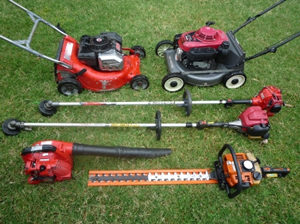
Comments are closed, but trackbacks and pingbacks are open.